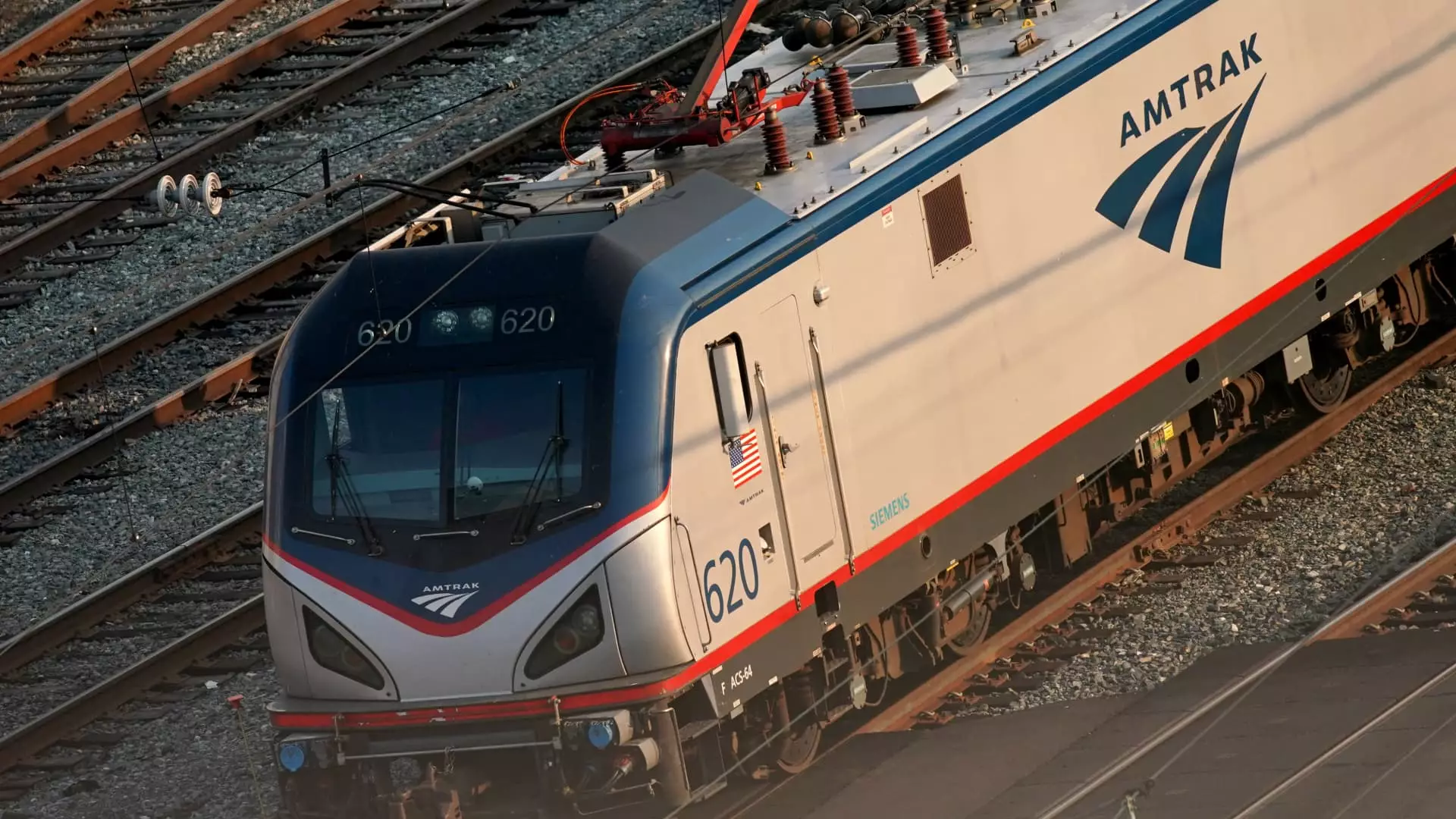As the travel industry rebounds from the devastating impacts of the pandemic, more and more travelers are opting for trains over planes. Despite the longer travel times, trains offer certain advantages such as affordability, comfort, and environmental friendliness that are attracting riders to Amtrak, the government-backed U.S. rail service. This shift in preference is indicative of the changing dynamics of travel and the growing demand for sustainable transportation options.
One of the key factors driving the rise in train travel is the soaring prices of airline tickets. Following the resurgence in travel demand, airline ticket prices have skyrocketed, leaving many travelers seeking more affordable alternatives. Trains, on the other hand, are often cheaper than flights, making them an attractive option for budget-conscious travelers. Additionally, trains provide more legroom and a more comfortable journey compared to the cramped spaces of airplanes. Clint Henderson, a managing editor at travel site The Points Guy, highlights that even though train routes may take longer than flights, the total travel time can often be comparable when factoring in various airport-related factors such as traffic, security lines, and boarding wait times.
Another significant advantage that trains have over planes is their environmental impact. Air travel is a major contributor to global carbon emissions, accounting for approximately 2% of the world’s total emissions. In contrast, train travel produces significantly lower emissions, making it a greener choice. This aspect of sustainability is attracting eco-conscious travelers who are actively seeking travel options that have a lesser impact on the environment. Aaron McCall, the federal advocacy coordinator at California Environmental Voters, emphasizes that communal travel, such as train journeys, further reduces emissions. This emphasis on sustainability has led to an increase in Amtrak ridership in California, despite the region’s lag in public transportation compared to the East Coast.
Apart from affordability and environmental friendliness, trains offer additional benefits that make them an appealing choice for many travelers. Train stations are often located in city centers, providing convenient access to urban areas compared to airports, which are usually situated on the outskirts of towns. This proximity to city centers saves travelers time and enhances the overall travel experience. Train travel also allows for greater flexibility, with amenities such as the ability to bring bicycles onboard and work remotely using the available Wi-Fi. These factors contribute to a more seamless and enjoyable journey, as expressed by Leonor Grave, a regular Amtrak traveler who prefers the train over flying.
Amtrak, although not yet comparable to high-speed rail networks in Europe and Japan, has made efforts to improve its services. The introduction of Acela trains, which can reach speeds of up to 150 miles per hour in certain sections, demonstrates Amtrak’s commitment to enhancing its offerings. However, the company has faced challenges in maintaining on-time performance. While ridership and revenue have increased along the Northeast Corridor, delays and disruptions have impacted Amtrak’s overall performance. Despite these challenges, Amtrak remains dedicated to decreasing disruptions and improving service. The company is investing in infrastructure upgrades and train station enhancements, aiming to revolutionize train travel and double ridership by 2040. Though the timeline may be long, these investments are seen as crucial game-changers for the future of train travel.
The rise in train travel over air travel reflects a growing shift in traveler preferences. Affordability, comfort, environmental friendliness, and additional benefits such as convenience and flexibility are enticing more travelers to choose trains over planes. While Amtrak continues to face challenges in maintaining on-time performance, its efforts to enhance infrastructure and services are paving the way for a more exciting future of train travel in the United States. As the demand for sustainable transportation options continues to rise, trains are emerging as a viable and appealing choice for domestic travel.


Leave a Reply